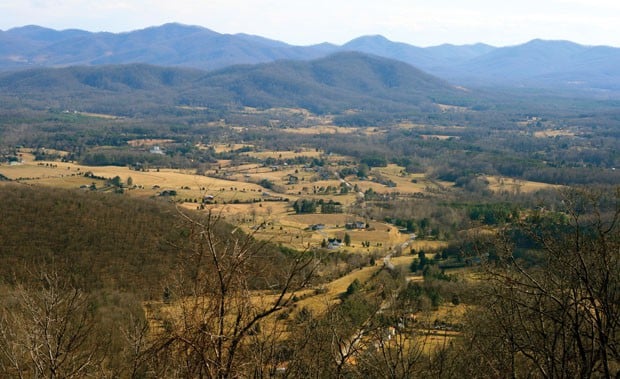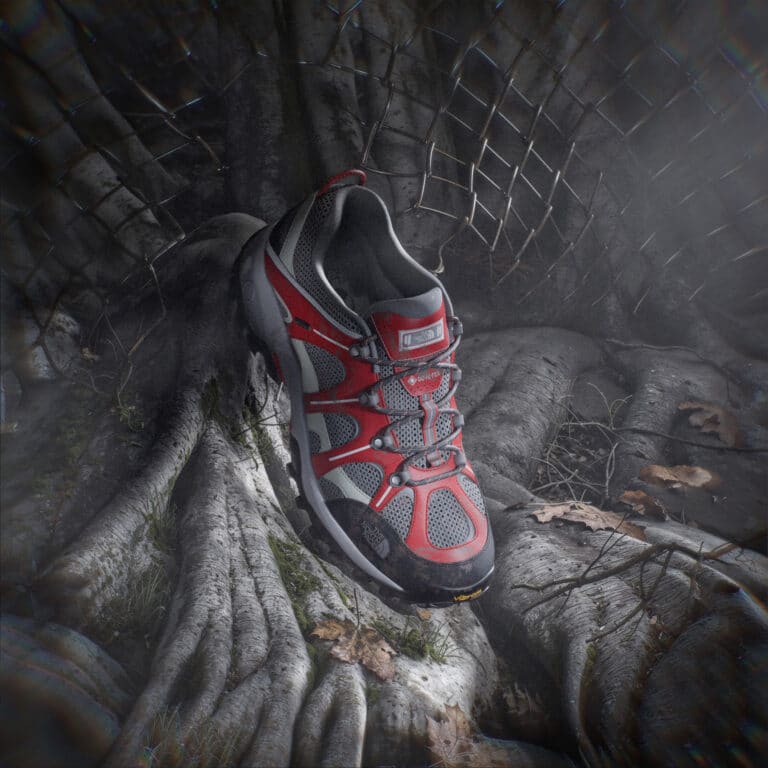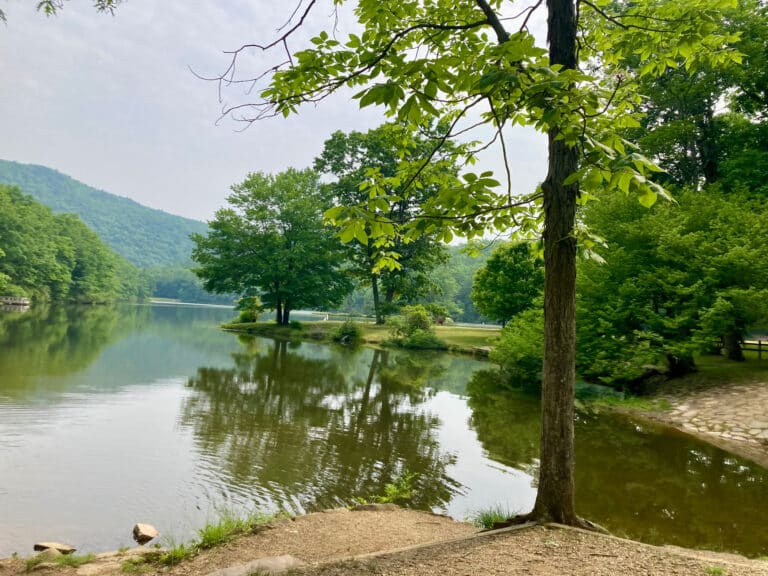Photo: Ashley Woodring
In the spring of 1669, a German named John Lederer started riding west from Richmond in search of the shortest land route to the Indian Ocean. He missed it by a good 10,000 miles—and knew it, writing afterward that anyone who thought the Indian Ocean, never mind the Pacific, was just “eight or ten days” on horseback from Virginia was “in a great errour.” But he did manage an altogether different first: he became the first person in recorded history to hike the Blue Ridge Mountains.
Obviously, he wasn’t the first to encounter the Blue Ridge; in his notes, which were written in Latin and then translated into English by a colonist named William Talbot and published as The Discoveries of John Lederer, Lederer himself describes the agreeably wide grass paths that then characterized the landscape, created by generations of Indians who shaped the land by slashing and burning forest. “The Country here, by the industry of these Indians, is very open, and clear of wood,” he writes.
But he was the first to travel across them for the sole purpose of seeing what was on the next peak, and then, crucially, to write it down. Lederer made three trips in total, sent by Virginia’s colonial governor to explore the land, the land that Thomas Jefferson said much later in his Notes on the State of Virginia was “worth a voyage across the Atlantic.”
Reading his notes, it’s hard not to like Lederer. Confounding expectations of a man of his era, he carefully catalogs the many Indian groups that then inhabited Virginia and notes their names for places and geological features. He also documents native medicines and social mores. Even when he gently mocks the local explanation for how rattlesnakes manage to get a jump on fast-moving squirrels—squirrels are so spooked by their gaze that they lose their footing and fall off branches and into the waiting maws of the snakes below—it’s with a clear affection.
Lederer also has a sense of humor. He makes fun of his English travel companions for insisting on religiously following their compasses rather than their Indian guides, comparing the Europeans to “those Land-Crabs, that crawling backwards in a direct line, avoid not the Trees that stand in their way, but climbing over their very tops, come down again on the other side, and so after a day’s labour gain not above two foot of ground.”
He writes proudly of how the men he first sets out with laugh at him for packing dried cornmeal as his main provision, only to beg him for at least a taste when the humid summer air turns their biscuits moldy in a matter of weeks (he tells them no). He tells how a Major Harris in his party “vainly imagined [the James River] to be an Arm of the Lake of Canada; and was so transported with this Fancy, that he would have raised a Pillar to the Discovery, if the fear of the Mahock Indian, and want of food, had permitted him to stay.”
And he’s relatable, as when he talks about the same Major Harris defecting from the trip and leaving him only a gun and a prayer under the assumption that Lederer would meet his end in the jaws of a bear, wolf, or bobcat, or at the hands of hostile Indians. Harris’ assumption, writes Lederer, “made him the bolder in Virginia to report strange things in his own praise and my disparagement, presuming I would never appear to disprove him.” Anyone who’s ever been badmouthed behind his or her back has to appreciate Lederer standing up for himself.
In short, he was one of us, a wry but sympathetic observer making his way across rivers and over peaks without missing a thing. The woods then may have seemed wilder, teeming, as they were, with predators; the landscape may have been dotted with Indian towns instead of Burger Kings and gas stations. But his account of trekking toward, then up, the mountains, easily cuts straight through more than three centuries of change.
The first time he ever spots mountains, he writes: “The fourteenth of March, from the top of an eminent hill, I first descried the Apalataean Mountains, bearing due West to the place I stood upon: their distance from me was so great, that I could hardly discern whether they were Mountains or Clouds.”
That report comes within days of the start of the first of his three journeys, but it isn’t until his third, 17 months later, that he actually fully documents conquering a mountain in the Blue Ridge. By this point, his betrayer Major Harris is safe at home, spreading nasty rumors about Lederer. He makes the journey instead with a Colonel Catlet: “The ascent was so steep, the cold so intense, and we so tired, that having with much ado gained the top of one of the highest, we drank the Kings Health in Brandy, gave the Mountain His name, and agreed to return back again.”
Looking out over the Blue Ridge and across the Shenandoah Valley, to the greater Appalachians before him, the true vastness of the range finally dawns on Lederer, giving him “no encouragement … to proceed to a further discovery.”
It’s all there: the challenge, the exhaustion, the confused blend of futility and triumph in equal measure that comes with reaching a summit and seeing that it’s just one crest of one wave in a seemingly infinite sea. The vow, after all, to return. John Lederer was a hiker.
In his opening notes in the official edition of Lederer’s account, Talbot, the translator, says that the German never did get the chance to return. Virginians were furious that their tax money had been spent sending a continental foreigner out to shame the colonists by pushing on farther than they were willing or able. Talbot found the “modest ingenious” Lederer living in exile in Maryland.
He says he did not expect to like Lederer, his damaged reputation having preceded him. But they became friends as the German’s stories and levelheadedness “quite abolished those former impressions in me.” At the end of it all, Talbot wrote, “I thought the Printing of these Papers was no injury to the Author, and might prove a Service to the Publick.” And so it did. John Lederer: first hiker of the Blue Ridge.








